
There were several seven-figure prices at the latest Asia week sales led by a €3.25m Yongzheng falangcai bowl (see News this edition), a Coromandel lacquer screen and an imperial cinnabar lacquer box.
A number of six-figure results for metalwares, ceramics, lacquerwares and furniture also emerged, some of them unexpected other promoted beforehand as potential high-flyers.
Pictured here are the Asian series top-sellers and some of those other highlights. We also cover the hammer highlights from Asian sales in Germany and Austria.
£1 = €1.18
Provenance to Colonel ‘PL’
Fifteen sales at the Drouot auction centre were given over wholly or partly to Asian Art for its December series, chalking up a premium-inclusive total of €12m.
Top price here was for a rare Yongle period cinnabar lacquer circular box carved with camelia and other flowers and distinguished by the addition of a poem written by the Qianlong emperor to the interior of the lid (pictured top).
Offered at Mathias & Oger Blanchet (24% buyer’s premium) on December 9, the box was part of a group of six pieces that came with an old mid-19th century provenance to the collection of a French Colonel ‘PL’ who served in Saigon in the 1860s and visited China, shipping back from Canton several crates of objects acquired there in 1861.
Correspondence between the colonel and his family makes reference to red lacquerwares which he notes are valuable and highly prized in China.
Estimated at €150,000-200,000, enough interest in this piece emerged to take the final price to €1.6m (£1.37m).
Vase and plaques impress
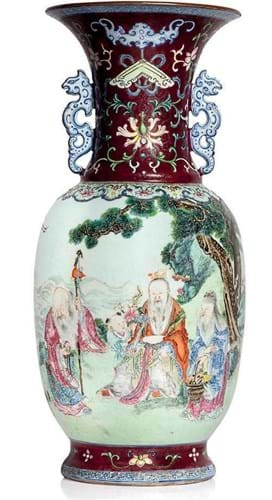
This 20in (51cm) high baluster shaped porcelain vase dated to the first half of the 19th century with a red Qianlong mark to the base, fetched €135,000 (£115,385) in Aguttes’ (25/23% buyer’s premium) December 9 Asian Art sale. The body of the vase is decorated in famille rose palette with the three deities holding their respective emblems while the neck is decorated in falancai enamels and has two handles shaped as chilong. To the base is a red Qianlong mark.

The sale also included a pair of enamel porcelain plaques measuring approximately 19 x 13in (48 x 33cm). One was decorated with an eagle perched on a branch by a cliff edge, the other with a dragon among clouds and both were in frames described as possibly zitan.
Catalogued as in the style of Tang Ying, (the celebrated 18th century artist and superintendant of the Imperial kilns), they were estimated at €2000-3000 but ended up being pursued to €92,000 (£78,630) including premium.
Buddhist bronzes
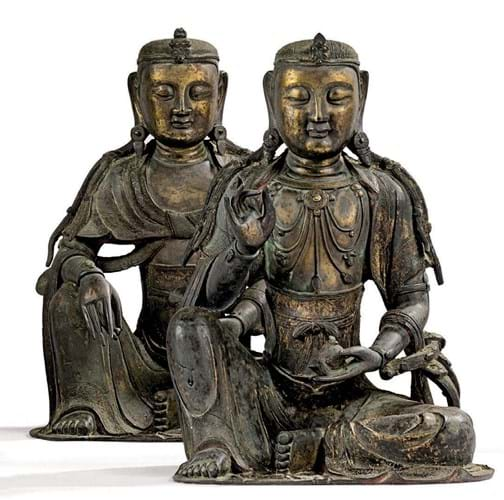
A pair of parcel-gilt bronze Boddhisattvas from the early Ming dynasty (14th-19th century) was the top-seller in Sotheby’s (25/20/13.9% buyer’s premium) December 10 Asian auction in Paris.
The 15¾in (40cm) high statuettes come with a pair of gold lacquered wooden throne-like stands dating from the Qing dynasty.
The duo may originally have formed part of a larger group of figures, such as the Eight Great Bodhisattvas.
They are among the few surviving Buddhist figures cast in bronze made in the 14th century during the Yuan or very early Ming dynasty, a short period of transition in style and iconography in Chinese Buddhist sculpture. The figures sold just under the €500,000-700,000 estimate at €450,000 (£384,615).
Screen makes a cover star

The lot chosen by Christie’s (25/20/13.5% buyer’s premium) to decorate the catalogue cover for its December 12 Paris Asian art sale proved to be the best-seller. This 12-panel Coromandel lacquer screen from the Kangxi era measures 9ft 6in (2.9m) in height and 20ft 6in (6.25m) in width.
One side of the screen is carved and decorated with an elaborate map-like scene of the coastal waters of China populated by small islands and sailing ships with a central view of Nan’ao island where people are celebrating a birthday.
The screen was given as a present to general Zhou Hongsheng on the occasion of his 60th birthday in 1699 and the reverse of the screen is occupied with a lengthy and detailed inscription that includes a list of 22 people who offer their birthday congratulations.
It comes from a French collection, acquired in 1967, and has been extensively exhibited including in 2004 in Versailles at the exhibition titled Kangxi Empereur de Chine 1662-1722 La Cité Interdite à Versailles.
Estimated at €200,000-400,000, it sold for €1.75m (£1.49m).
Scholar’s workplace
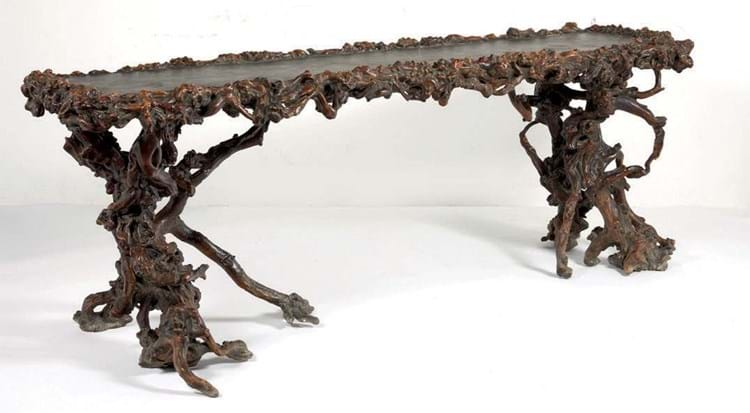
Much more demand than AuctionArt (27% buyer’s premium inc VAT) had expected came for this unusual carved rootwood scroll or scholar’s table, measuring 8ft 5in (2.57m) in width. Estimated at €4000-6000 in its December 10 dedicated Asian auction, it ended up selling for €100,000 (£85,470). A single rootwood armchair similarly outpaced modest expectations to sell for €67,000 (£57,265).
Bell rings up big price and tray delivers
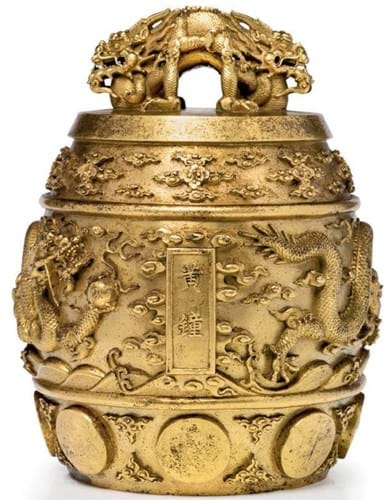
A highlight of the dedicated Asian sale at Tessier & Sarrou (28% buyer’s premium) on December 16 was an example of a bronze ritual bell or bianzhong from the Qing dynasty bearing an inscription with a date corresponding to 1716.
Such bells are created as part of a carillon of 16.
Another piece with a desirable old provenance, the bell was brought back to France by Robert de Semallé (1849-1936). He had been sent to China to pacify the political tensions between France and China generated by the ‘Tonkin Affair’ and worked at the Beijing embassy from 1 880-84.
The bell had been kept in his family ever since his return to France in 1884. Estimated at €200,000- 300,000, the bell ended up selling for €520,000 (£444,450).
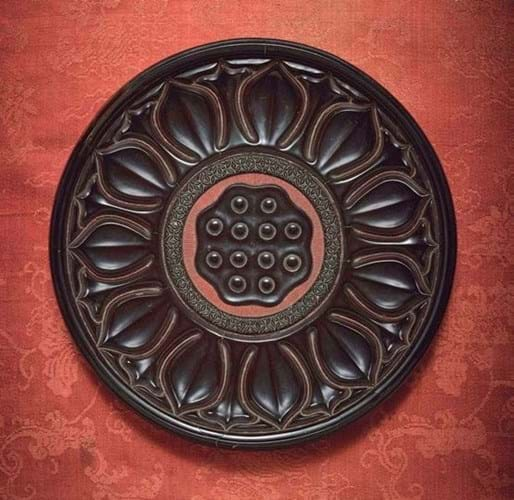
This sale included another rare piece of early lacquerware: a 7½in (17cm) diameter circular Yuan/early Ming dynasty tray carved in the form of a lotus flowerhead with the artist Zhang Cheng’s scratch mark to the reverse.
This was bid to €300,000 (£256,410), double the upper estimate.
Fu Baoshi belief
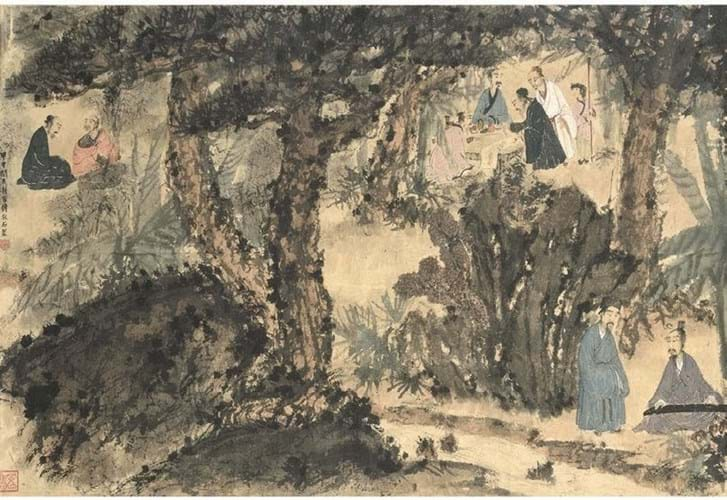
Very much the highest price at the Tajan (25/20/12% buyer’s premium) Asian Art auction on December 9 was a large 21in x 2ft 7in (54 x 90cm) painting in ink and colours on paper of figures in a landscape.
The auction house catalogued the work as “after Fu Baoshi”, the celebrated 20th century Chinese artist and as having an apocryphal signature, date and seals.
It gave a very cautious €1000-1500 guide but the bidders felt differently about the attribution and took the price to no less than €616,600 (£527,010) including premium.
Tajan said: “In the absence of an authoritative committee or rights holder on Fu Baoshi’s work, our expert was unable to guarantee that this painting was executed by him. The market decided otherwise and came out in favour of its authenticity.”














